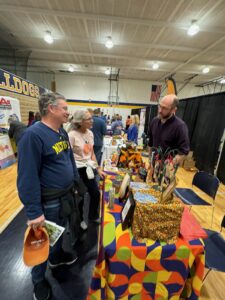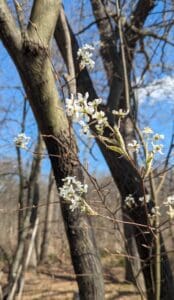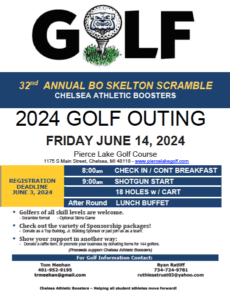
(Chelsea Update would like to thank Jennifer Fairfield, owner of The Garden Mill for the information in this column. Part 1 published yesterday.)
For the birds:
Clean out birdhouses now, if you haven’t already. First check to make sure they aren’t already being occupied.
If the nesting materials in the box look at all new and fresh, leave them – it’s an indication you already have tenants. I have had bluebirds and house sparrows investigating my bluebird houses for a few weeks now. I’ve been harassing the house sparrows to try to discourage them from taking up residence, as they are a non-native, very aggressive bird that has threatened the existence of our native bluebirds. It takes some vigilance to keep them at bay, but if you can, it gives the bluebirds a fighting chance.
While it is generally illegal to interfere with the nesting sites of migratory birds (as well as many that are not considered “migratory”), house sparrows are not a protected species, and really should be discouraged.
If you have good conditions in your yard for Purple Martins, make this the year you put up a house Purple Martin House for these voracious insect eaters. Purple Martins have been in decline in the state for 50 years, and the Michigan Audubon Society is working to build up the Purple Martin population – but they need our help.

Consider providing nesting materials for your birds. All kinds of birds use all kinds of different materials to construct or line their nests, and you can help by offering them some useful items, such as human and animal hair (when you brush Fido or Mittens, collect the fur and put it out for your birds to use), short strips of cloth, and short pieces of yarn.
Don’t give them the lint from your drier, as that can contain harmful chemicals, and can also get wet and soggy – neither of which will be good for the birds. You can simply stuff your offerings into a suet cage, or you can purchase inexpensive, ready-made nesting material bundles from your favorite birding supply store.
Check the condition of your hummingbird and oriole feeders and replace them if they are cracked. As the temperatures start to warm up, put your feeders out during the day to help early arrivers find food. If the temps dip below freezing at night, be sure to bring the feeders indoors to prevent cracking.
Happy Gardening.














